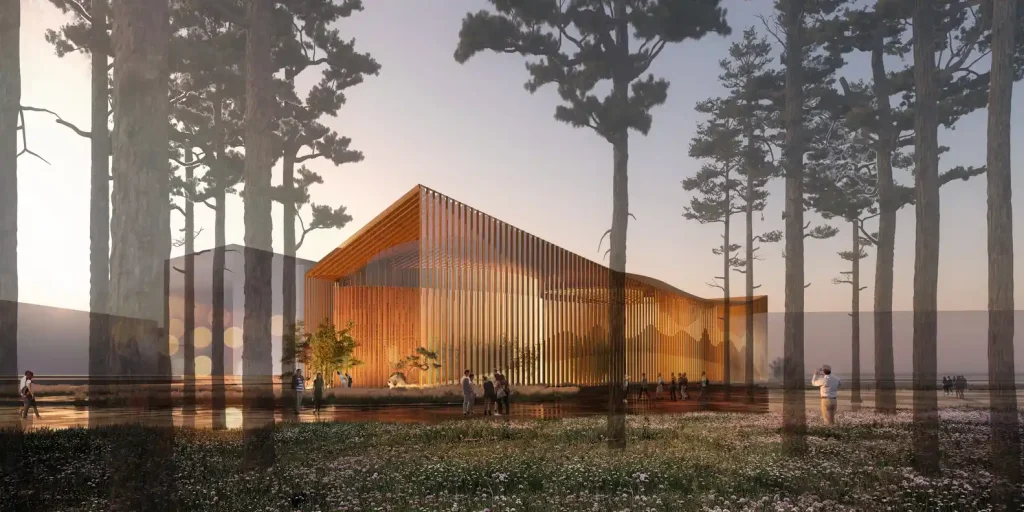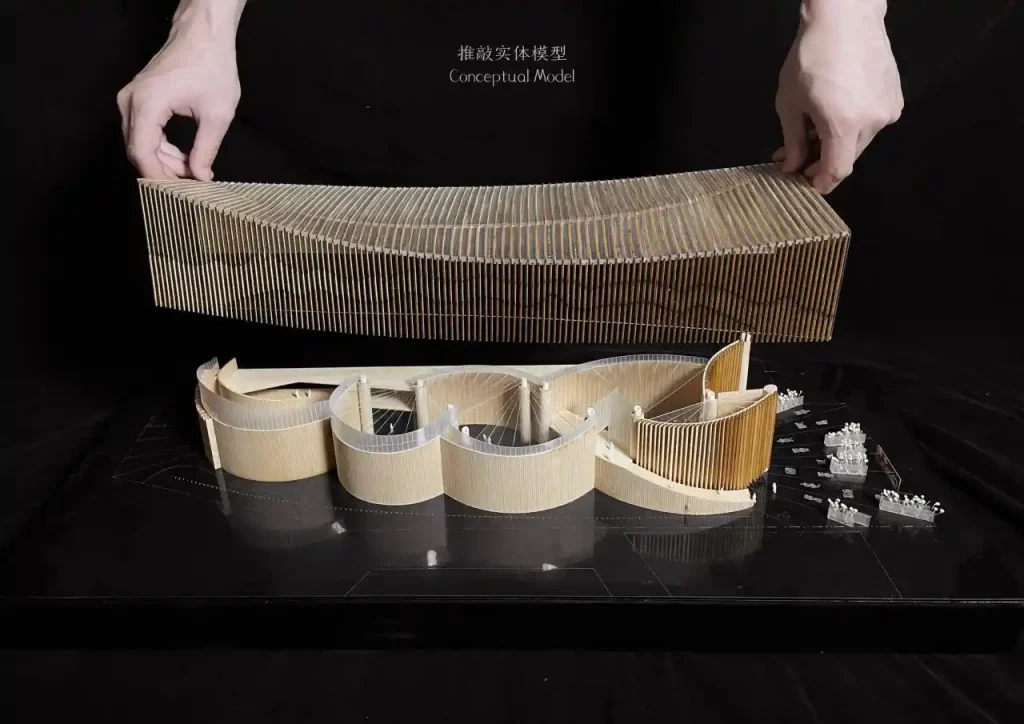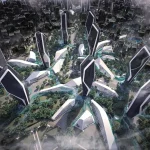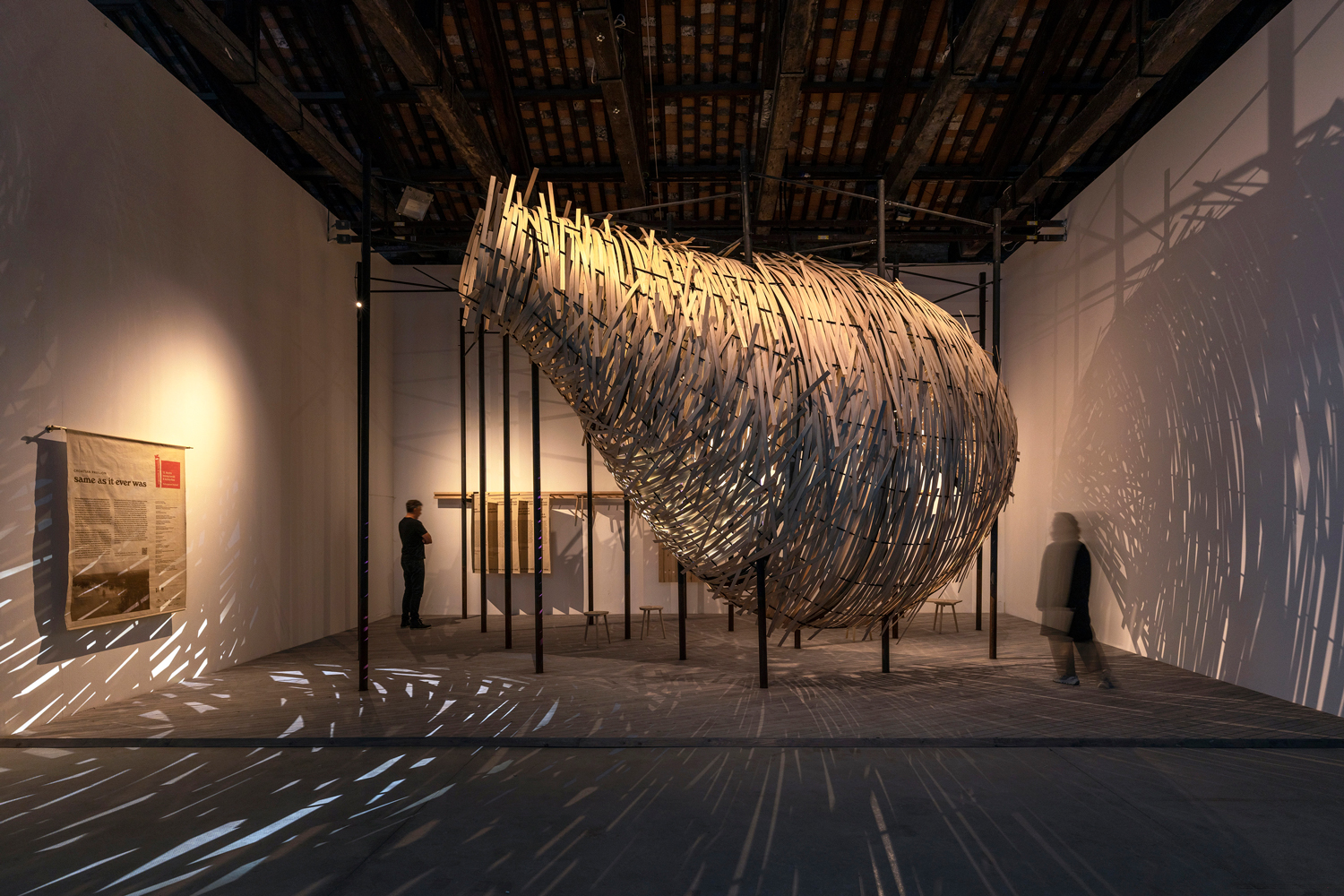The China Pavilion for the upcoming World Expo in Osaka in 2025 was unveiled to the public during a press conference organized by the China Council for the Promotion of International Trade (CCPIT) on April 26th, 2023. This architectural masterpiece draws inspiration from the “Inscribed Slips of China,” a traditional Chinese artifact reflecting the country’s history.
The China Architecture Design Group (CADG) designed the China Pavilion for Expo Osaka 2025, seamlessly blending elements of bamboo, Chinese characters, and antique books into a harmonious ensemble. The pavilion exudes the essence of China’s cultural tapestry, showcasing its deep-rooted ethos and unwavering commitment to modern sustainable development.
The theme of inscribed slips is also integrated into the pavilion’s interior design. The sequence of the display area represents civilization’s evolution from the past to the future. This philosophy is expressed through natural light and an open, column-free exhibition hall, facilitating seamless display arrangements and enhancing the connection between visitors and the natural environment.
Moreover, the pavilion aims to foster cultural exchange and forge meaningful connections between China and other countries, including Japan, through various activities and partnerships during the Expo. Throughout the Expo, a dazzling array of activities and collaborations would unfold within its walls, providing a platform for meaningful interaction and fostering a deeper understanding of global cultures. It serves as a platform for global interaction, offering visitors a glimpse into diverse cultures worldwide.
The CCPIT has been actively looking for design concepts for the China Pavilion since April 2022. Academician Cui Kai, CADG’s Chief Architect, led the design team who worked extensively with this project’s design team. After gathering views and ideas from authorities and specialists in architecture, arts, culture, and other sectors, the design scheme for the China Pavilion incorporating the “Inscribed Slips of China” concept was finalized.
In conclusion, the China Pavilion for the 2025 World Expo in Osaka will captivate the globe with its beautiful design and deep symbolism. It eloquently combines history and innovation, paying honor to the past while adopting a forward-thinking attitude. Visitors will begin on an incredible trip when they enter this architectural marvel, connecting with the subtle threads of civilization and immersing themselves in an international weave of culture and harmony.





















Leave a comment